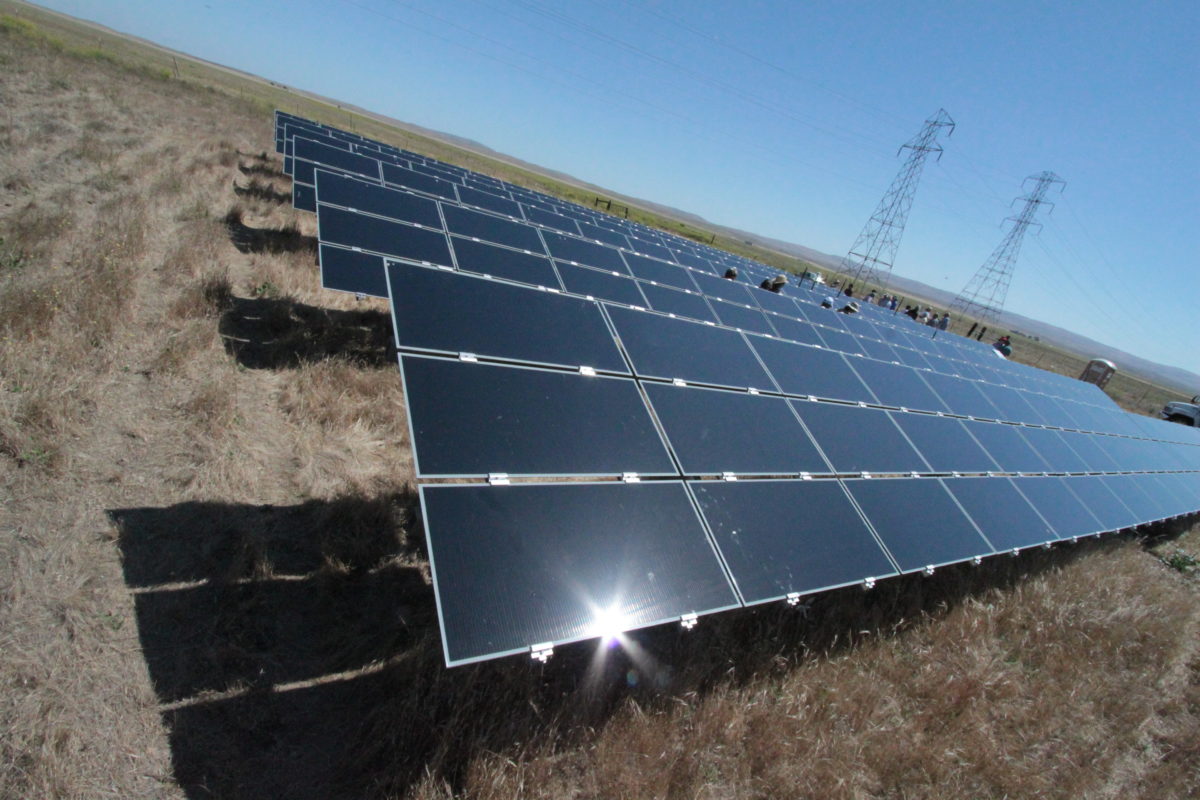A research group from the University of Utah has proposed a new approach to improve the cooling of PV modules through convective heat transfer in large-scale solar power plants.
The U.S. scientists based their work on previous studies of land-atmosphere interactions and surface thermal heterogeneity and sought to assess how the plant design and configuration may have an impact on convective solar panel cooling. “We hypothesize that certain solar farm arrangements may enhance natural convective heat transfer between the solar modules and surrounding flow,” they stated in the paper Potential of module arrangements to enhance convective cooling in solar photovoltaic arrays, published in Renewable Energy.
The group used large eddy simulation (LES), a technique for simulating turbulent flows, to analyze three different module arrangements, and compared them to the common row-organized arrangement. “In the LES framework, an idealized solar farm is represented as a set of heated patches embedded in the ground surface,” it further explained.
The module grouping and row-spacing were analyzed in four configurations, which the scientists named baseline, scattered, distant, and compact. “The scattered, distant, and compact cases are designed to vary both the patch size and the density of patches within the solar farm.”
In all four plant configurations, the same amount of thermal energy is provided through the solar and ground surfaces. A thermal packing parameter, which the scientists marked with the greek letter φ, was used to characterize the four cases based on arrangement and thermal variations. “If all solar modules were packed together into one massive set with no spacing among modules, the associated φ value would equal 21.2, a comparatively large φ value,” the academics stressed. “However, if this large mass of solar modules was then separated, or cracked, into a sparse arrangement of individual modules with significantly large spacing, the φ value would approach zero.”
The baseline case with common module arrangement has the smallest value of φ, as the solar patches are the most cracked or sparse. “On the contrary, the compact case corresponds to the highest value of φ because of both the grouping of modules into large patches and the dense packing of these patches,” they added.
Their analysis showed that the compact case has a value of φ that is approximately 10 times larger than the baseline case. This, according to the U.S. team, demonstrates a 14.8% increase in the convective heat transfer coefficient over the baseline. It also ascertained that the compact case has the highest turbulent heat rate, while the distant case exhibits the lowest. “By reducing the inter-row spacing between the four patches, the compact case aggregates the coherent structures above the individual patches into a compounded, stronger plume,” the researchers highlighted. “Among the four idealized cases, the compact case most effectively transfers heat from the solar farm to the atmospheric flow and thus most effectively enhances convective cooling.”
According to them, a 14.8% in heat transfer coefficient may result in an 8.4% increase in electricity output at heat transfer coefficient values of 10 to 11.5 W /m2 K. “The results of four idealized study cases indicate that packing idealized solar modules in close proximity, which increases φ, can exponentially increase convective heat transfer of the solar farm,” they concluded.
This content is protected by copyright and may not be reused. If you want to cooperate with us and would like to reuse some of our content, please contact: editors@pv-magazine.com.




6 comments
By submitting this form you agree to pv magazine using your data for the purposes of publishing your comment.
Your personal data will only be disclosed or otherwise transmitted to third parties for the purposes of spam filtering or if this is necessary for technical maintenance of the website. Any other transfer to third parties will not take place unless this is justified on the basis of applicable data protection regulations or if pv magazine is legally obliged to do so.
You may revoke this consent at any time with effect for the future, in which case your personal data will be deleted immediately. Otherwise, your data will be deleted if pv magazine has processed your request or the purpose of data storage is fulfilled.
Further information on data privacy can be found in our Data Protection Policy.